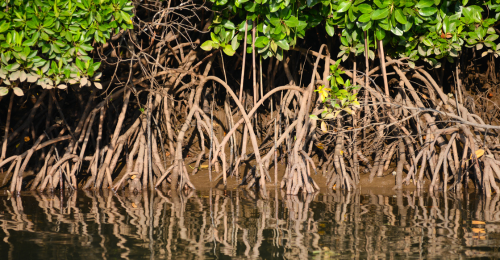Educating to Protect: Audubon Americas exhibit on Panama’s Mangroves

Panama is full of diverse ecosystems! Some, we know and love to see, like the rainforests and coral reefs, and others that remain hidden in the pages of scholarly journals.
These unique habitats include, Panama’s mangroves! The mangroves in Panama may be lesser known to the public, but they are vital ecosystems that will play a role in combating biodiversity loss and climate change.
By increasing public awareness through interactive media, environmental agencies aims to ignite broader support for mangrove conservation in Panama.
The traveling exhibition "The Mangroves: Allies Against Climate Change" offers insight into how mangroves store carbon and safeguard biodiversity in Panama. The exhibition, created by experts from the Blue Natural Heritage Project (BNH) and funded by the UK’s Blue Carbon Fund and managed by the Inter-American Development Bank (IDB) will be Implemented in collaboration with Audubon Americas, Panama Audubon Society, and the Ministry of Environment of Panama.
With support from the Biomuseo in Panama City the display will be traveling to Santiago, Chitré, Penonomé, and Panama City to raise awareness about the importance of protecting these coastal ecosystems.
Mangroves in Panama
Mangroves are the dense forests bordering land and sea, they play a vital role in combating climate change by capturing carbon dioxide through photosynthesis, storing it in their tissues and soil. Their exceptional ability to store more carbon per hectare than other ecosystems makes them invaluable in the fight against the global climate crisis.
Along Panama’s Pacific and Caribbean coasts, mangroves act as a protective barrier, lessening the impact of climate change. The bay of Chame has a diverse system of mangroves that not onlystore carbon but also safeguard biodiversity and communities, contributing to human well-being and the planet’s health.
Mangroves are vital ecosystems that offer numerous benefits to nature and people, including biodiversity support, storm surge protection, erosion reduction, water purification, and habitat provision for various species.
